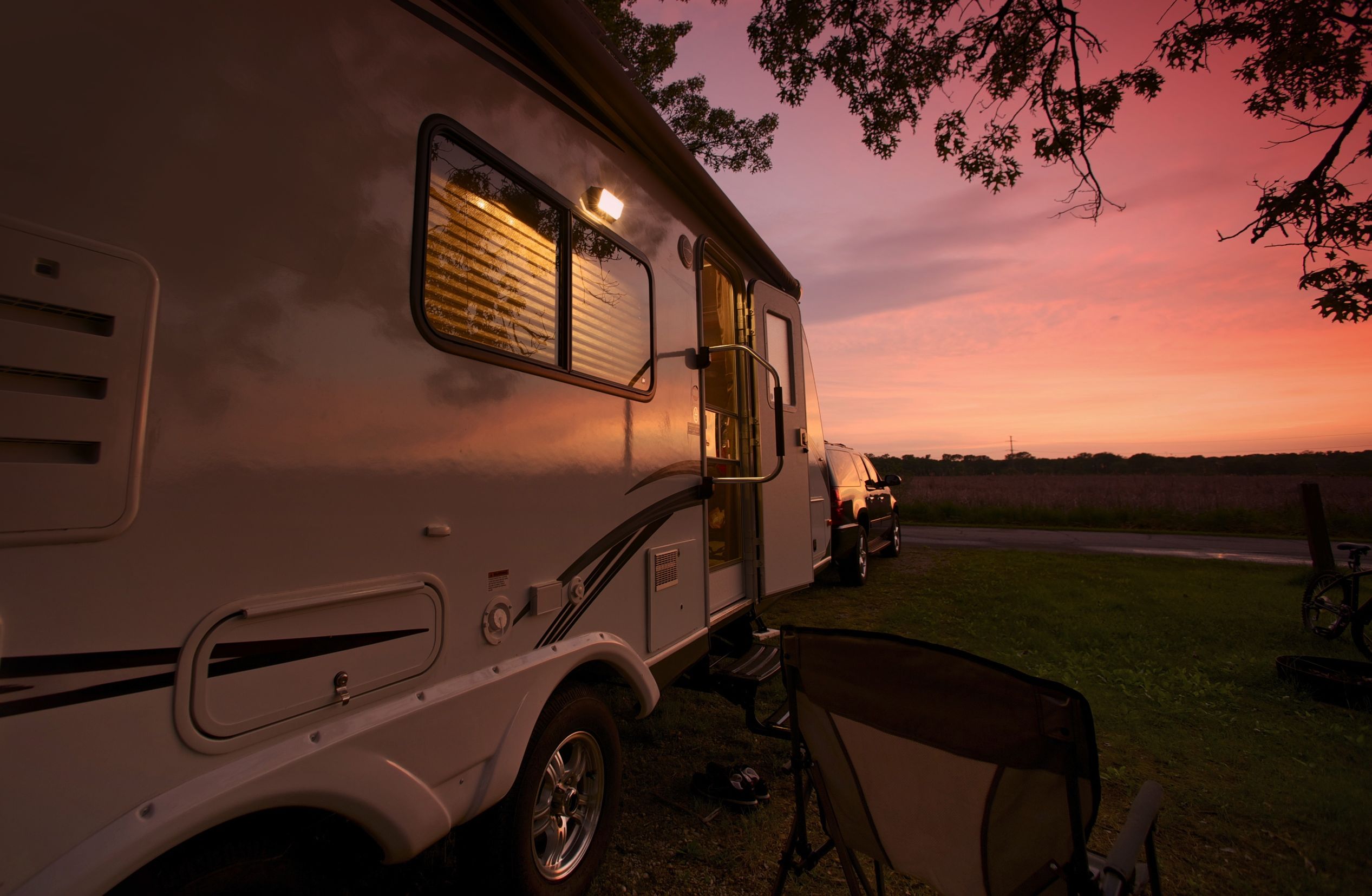In the words of Benjamin Franklin, “An ounce of prevention is worth a pound of cure.”
It’s just as true for your RV. Regular maintenance is essential to keep our RVs “healthy,” in other words, well-maintained so that they function as they should and before big problems arise. The occasions where this preventative maintenance is most essential is (1) before your RV goes to storage; (2) when your RV comes out of storage; and (3) before departing on any extensive trips.
1. Cover. When storing your RV, either for the winter or on non-camping weekends, keep it in a covered space if possible. A space with a roof, such as a barn, lean-to, or large carport, is ideal since the materials offer more protection for your RV’s roof. Examine all seams, look at fixtures, and look for tears or cuts quarterly or bi-annually to ensure your roof doesn’t have any weak points, water damage, or holes.
2. Replace. Too often we let “small” things slide and they become big issues later. Look at your doors, vents, and window seals for cracks and other signs of wear. Replace the seals as soon as you can, before there are any leaks. Look at radiator and heater hoses for cracked, brittle, or soft spots. Another thing we often let go by the wayside: the air filter. A clean one helps your RV run better as well as helps with fuel economy, so check it to make sure it doesn’t need to be replaced. Look at the wiper blades for signs of wear as well; don’t wait until it’s raining to realize your blades do a crummy job.
3. Lubricate! This is especially important for slide-outs in order to reduce friction and corrosion. Look for areas of corrosion and for any areas where dirt and grime have built up as you’re doing this. Clean up as necessary. Lubricate a couple times a year, at minimum, and always have a can handy just in case. Another important component on your RV to grease up is the stabilizer jacks. Ask for a professional recommendation as to which product to use that will provide the best protection and the best results.
4. Look underneath. If you don’t mind the tight quarters, get under your RV for an up-close look. Check for signs of damage on the frame, worn or loose cables and wires, wear and tear on the underside enclosure and insulation, and fluid leaks. It may be best to get professional assistance to check the drive shaft, joints, plumbing, axles, etc.
5. Test. This applies to smoke detectors and carbon monoxide alarms as well as any appliances, air conditioning units, heaters, generators, lights, and all electric components such as retractable awnings. Pay attention to strange noises or unusual smells that could signal a problem. For air conditioners, heaters, and generators, it’s a good idea to let them run for a time if they have been left idle. Do this multiple times over the time your RV is being used for camping and traveling.
Your other vehicles need TLC, too.
If you have another vehicle – such as toad – that is only used during camping season and not in regular use during the rest of the year, do a thorough inspection prior to setting out. Take it to the dealer or car maintenance shop for a more professional inspection if you feel that is needed. Replace tires as necessary, top off fluid levels, replace wiper blades, check lights, and take it for a drive or two to make sure everything is working properly. Follow standard procedures, such as oil changes, and recommended maintenance/inspection, such as at 60,000 miles, to keep your vehicle in shape.

